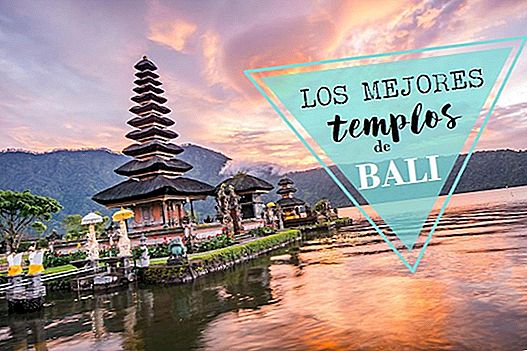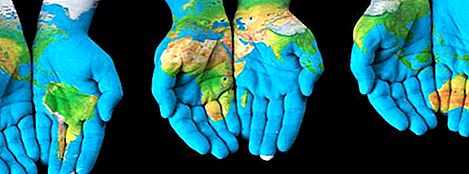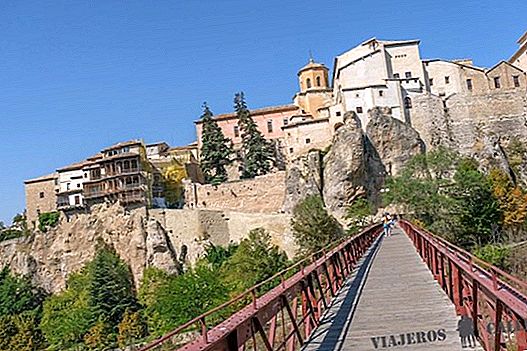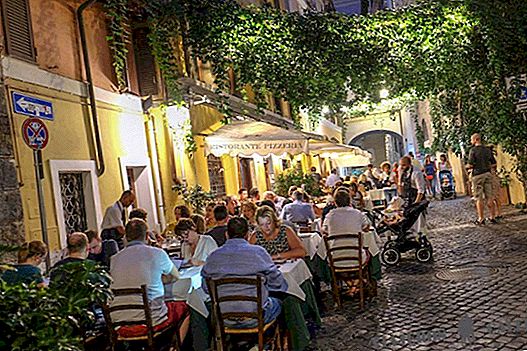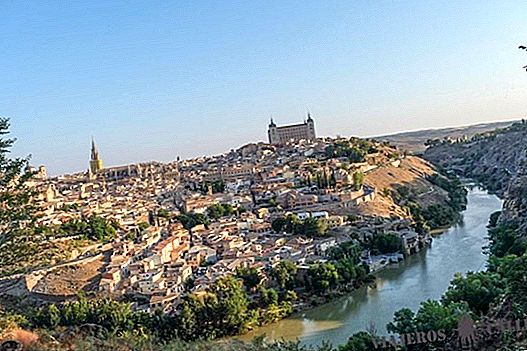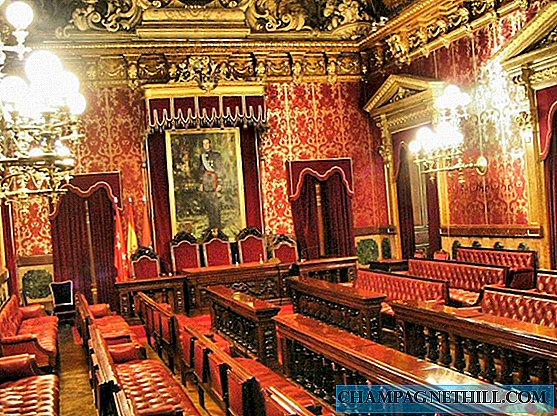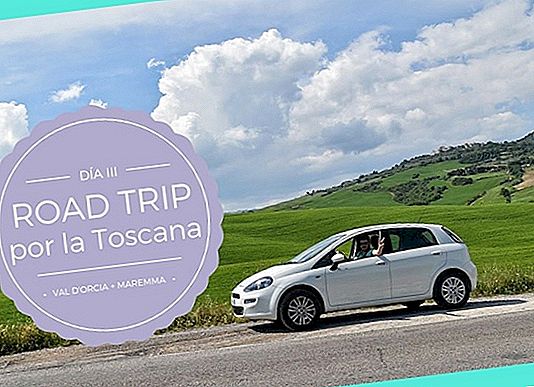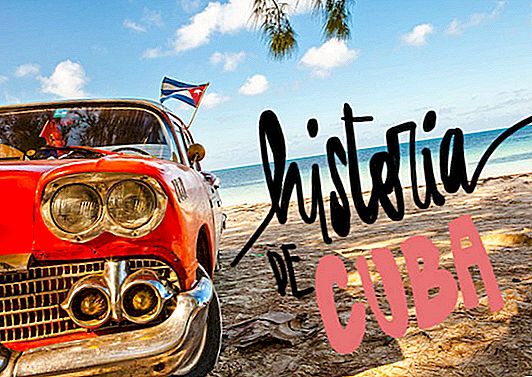
Before visiting any country it is advisable to read a little about its history, it will help you to understand many of the local customs, to avoid certain topics of conversation, to know the problems of society and to empathize much more with its people. Cuba is no exception, in fact we would say that it is mandatory to brood its thrilling history to know the key facts that have led the country to a situation like the one it is suffering today. In this article we will try to tell the history of Cuba without leaving the essential chapters, but trying not to make an inedible ball ... Let's see if we get it!
We already told you on occasion that Cuba has been the first country that KO has left us. It was not love at first sight, things as they are. Perhaps because we came from a two-month trip through the United States that, both physically and mentally, took away many energies. It was hard for us to understand this special island and get in full tune with it ... and in Cuba we kept asking ourselves questions that had no answer. Of course, from the first moment the Cubans seemed to us the most precious treasure of this island. They are nice people, cheerful, who has been through a lot and has learned to face life with a positive attitude ... what does not kill you makes you stronger, right?
After spending some time on the trip we have realized that Cuba ends up taking a lot of love. Whether it leaves you misplaced at first, as if there is crush at first sight. Cuba is unique and today it is appreciated that there are places with such a strong and different personality.
Understanding this place without knowing, although superficially, its history, seems something impossible, so we have prepared a small summary where we are going to tell you the main stages of the history of Cuba.
We could divide the history of Cuba in 3 periods: pre colonial, colonial and post colonial.
Pre colonial period
The roots of Cuba must be sought in towns that emigrated from South America and North America. Although the key date at this time is 1492, when Christopher Columbus arrived on the island.
Colonial period
It is the time of Spanish rule, slavery and the development of true Cuban culture.
Post colonial period
It is the most complicated and richest time in terms of events. Actually there are two very different parts:
- The first, since the conquest of "independence" in 1898, when Spain was expelled and the island was put in the "protective" hands of the United States. It is the era of Fulgencio Baptista, about corruption and the friendly abusive policies of the United States ... and the mafia!
- This brings us to the second stage, which begins in 1959 with the coup de Castro, the most important figure in Cuban history. But the messes don't end here: the Castro regime It can be divided into two phases. The Soviet (1961-1991) and the modern (1991-present).
In this article we are going to focus on the Colonial Period and, above all, on the Colonial Post, which is when many things happen that allow us to understand Cuba today.
CUBA IN SPANISH HANDS
Yes, Colon He was the first to arrive in Cuba, but soon decided to leave it to continue exploring other Caribbean islands. A few years later, in 1511, a Spaniard (Diego Velázquez de Cuellar) arrived, along with 400 other men, with the idea of colonizing the island under the reign of the Spanish crown. The first thing they did was build 7 villas: Havana, Trinidad, Baracoa, Bayamo, Camaguey, Santiago de Cuba and Sancti Spíritus. Obviously the natives of the island began to worry and rebel. Normal. But of course, the will of the natives failed to overcome the force of arms and the first rebellion was easily suppressed.
The purpose of the Spaniards was to plunder the natural resources of the island, to do so they captured natives and they were forced workers (another word to define what, in effect, were: slaves). With the arrival of a priest, Bartolomé de las Casas, the situation improved and forced labor was prohibited. But 20 years had passed, too much time to avoid the desire to rise against a heinous colonialism and fight for the independence of a free people.
To this we must add another key fact in the history of Cuba: the introduction of african slaves. Why was it done? Easy: repressions and forced labor had decimated the indigenous population and the island needed manpower to be able to exploit the land, work in the industries (especially the sugar industry) and build cities.
INDEPENDENCE WARS
The United States War of Independence inspired many, including Carlos Manuel de Céspedes which in 1868 lays the groundwork for what would be the first great revolution Cuban, a revolution that for him and many others was totally incompatible with the idea of a slave Cuba.
The other big name of this era is that of Jose Marti, patriot, poet and revolutionary who, in 1892, founded the PRC (Cuban Revolutionary Party).
The key date in this whole story on February 15, 1898, when the American battleship Maine, sent by the US to protect its citizens living in Cuba, exploded. For many, it was a full-fledged false flag operation, but for the US it was the perfect pretext to accuse the Spaniards and begin the Hispanic WarU.S.
More info to deepen:
- War of 10 years, or War of Cuba
- Cuban War of Independence
THE PLATT AMENDMENT
After years of struggle, in 1902 Cuba declares itself an independent Republic. But, there is a but ... the US help against Spain did not turn out to be completely disinterested and, thanks (or because of) the Platt Amendment, the independence of the country was conditioned to meet certain requirements, including:
- To begin with, the US kept the right to intervene militarily on the island when it deemed necessary.
- He also obtained the right to create a naval base in Guantanamo (strategically a perfect point to master access to the Panama Canal region).
The Platt Amendment was a blow to the revolutionaries: OK, Spain had been expelled, but now there was another "owner": the United States.
More info to deepen:
FULGENCIO BATISTA
It must be said that the first years after independence were, at the political level, very unstable. These are years characterized by coups, corruption, uncertainty and a general discontent with the "protectorate" of the United States.
That is when another key figure in Cuban history comes into play: Fulgencio Baptista, a sergeant who, little by little, made his way until in 1933 he became the chief of the General Staff and in 1940 to be elected President.
The first years of his term were not bad: he approved many social reforms fair and it seemed that Cuba had found a liberal and democratic president. But this would not last long: after finishing his term in 1944 He went to the United States and began to live the father life ... he made good crumbs with American politicians and with members mafia, promising to promise them carte blanche in Cuban territory if they assured him a% of the profits in the business of drugs, casinos and prostitution.
In 1952 he returned to Cuba to give a coup, supported by his American friends. The second term Batista was completely different: to start, he increased his salary to more than the president of the United States, in a country that could not compete with the economy of his neighboring giant. It also increased the salary to the military, restored the death penalty and abolished several fundamental rights, like the strike.
Cuba, increasingly resented and the population lived on the threshold of misery while, a few, lived as kings.
THE CUBAN REVOLUTION
We have reached the part that interests you most
The Batista Coup d'etat left a good part of the population dissatisfied and the Havana revolutionaries, which were increasingly numerous, felt legitimate to take the initiative and bring, at once, peace and justice to Cuba. And here comes into play the most important figure in the modern history of Cuba: that of Fidel Castro.
Fidel Castro, a young lawyer, savvy and with very strong principles, helped by his brother Raul, Lieutenant Santamaría and a few other revolutionary idealists, began to plan the attack on the Moncada barracks, in Santiago de Cuba.
The attack, which took place on July 26, 1953He was brave, but very badly planned. The Batista military soon captured and tortured many of the 64 revolutionaries. Fidel, Raúl and a few others managed to escape although, a few days later, they were captured.
To all this it must be said that Fidel was married to the daughter of a member of the Batista government ... very heavy, huh? Here we summarize quite a bit the story: Fidel, Raúl and a handful of other men were sent to judgment. Fidel, who was a lawyer, took care of his own defense and although, as expected, he failed to get rid of jail, he delivered one of his most famous speeches: “condemn me, it doesn't matter, history will absolve me”.
After spending two years in prison they were released thanks to an amnesty of Batista (who tried, with little success, to befriend the people).
The Castro decided self-exile to Mexico, they feared that Batista's true intention was to kill them. At no time, however, did they completely abandon Cuba: July 26 movement It was already underway and with it the first flames of an independent and clandestine resistance.
In Mexico, a historic meeting took place that would change everything: the Castro met a very charismatic Argentine doctor involved in the liberation movements of Latin American peoples: Ernesto Guevara. Che.
The December 2, 1956, with 80 more men, the Castro, Camilo Cienfuegos (another key figure) and Ernesto Guevara sail to Cuba aboard the Granma. There is also defeat here: the army is waiting for them on the coast and it is not hard for them to end the revolt. Revolutionaries cannot do anything other than retreat to the mountains of Sierra Maestra and reorganize.
Castro sees clearly that they need the support of the people, concrete support, and he begins to attract new members faithful to his cause, they are mainly peasants and workers who share the revolutionary principles.
At this time the guerrilla battles are many and little by little important victories are obtained. Batista's army is increasingly demoralized and weak. The final battle comes at the end of December 1958 in Santa Clara, when Che and his men derail a train full of supplies, weapons and reinforcements for the Cuban army. Cambric I knew that, as soon as the Santa Clara power plant surrendered to the revolutionaries, the war was over and what did it do? He fled to the United States, but not before taking huge amounts of money and wealth.
The guerrillas found no more opposition from the military after this fright, the triumph was near. TheJanuary 1, 1959 Havana launched into the streets celebrating the revolution success. Cuba, for the first time, was free anti-imperialist.
Is this the end of the story? Not even a joke… everything has just begun 😉
THE CASTRO ERA
The United States did not see the figure of Castro badly, after all Batista was revealed a tyrant, selfish and corrupt. But of course, at first they did not take into account Fidel's ideology, more and more similar to socialist thinking. Over the years and especially at the end of the Revolution, The US was very clear that he had won a new enemy.
We must remember that we are in the era of Cold War and focusing on the situation in Cuba, its economy was facing a great drop in the demand for sugar, the majority of the population lived below the poverty line and, in addition, Havana was one of the favorite places for Americans to Enjoy play, drugs and prostitution.
This, clearly, was not compatible with Castro's socialist ideas and, as soon as Batista's escape and the victory of the revolutionaries were known, the large number of Americans living in Havana escaped, leaving all its properties back (house and cars included ... now you understand why there is so much American car in Cuba!).
Fidel and his men began a series of reforms destined to improve the situation of the people, who mostly loved him madly. Free health and education was promoted at all levels, the population was literate, large sums were invested in the construction of schools and hospitals, the infant mortality rate dropped and life expectancy rose, provided ration cards so that everyone could eat, but not everyone looked at the new leader with good eyes.
It must be said that the USSR she was delighted with her new “ally” (having a foothold 90 miles from the United States was a plus) and since the beginning of the Castro era she contributed financial aid Incalculable to the island.
The USA they looked threatened with this new alliance and they tried to destabilize Cuba with Cubans themselves. In 1961 the Invasion of Bay of Pigs (also known as Playa Girón) in which a group of Cuban exiles (with support, in principle, from the US) sought to inflict a fatal blow to Castro's system, but a real disaster was revealed.
- More information about the Bay of Pigs Invasion
The island declared itself anti-imperialist again and the US opted for a new weapon: famous locks. These began as responses to the expropriations of houses, cars and properties of US citizens after the victory of the revolution and continued until the meeting of Obama and Raul Castro in 2014. (Of course, Trump has already said he will execute the embargo again).
THE FALL OF THE BERLIN WALL AND THE ECONOMIC CRISIS (1989-1995)
With the fall of the Berlin wall and the dissolution of the USSR everything changed. The hardest time for the Cubans and the Castro began, the so-called “Special Period". The Soviet subsidies, which were pure oxygen for life in Cuba, they stopped suddenly, as well as the export of sugar that guaranteed about 5 billion profits. Castro tried to reorganize the economy but it was not enough (in addition, remember that the island suffered a hard international blockade).
According to what some Cubans we met told us, those were the worst years, the hardest. They were alone. There was rationing of food, transportation was stopped, there were continuous power cuts and many Cubans understood that the only possible way out was to escape from their own land and from a government that, far from improving their lives, had made them increasingly poor. It is the time of the great migration to the US, especially to Miami, when desperate Cubans threw themselves into the sea in precarious and dangerous rafts.
The only "reform" that worked was to open the country to foreign investment (tourism). Little by little it helped improve the economic and political situation (Cuba began relations with the European Union and with other countries in South America).
THE FIDEL SOCIALIST REGIME. GOOD OR BAD?
Fidel died in November 2016, but with him his achievements and defeats did not go away. We could talk a lot about whether Fidel's regime was bad or good. Our opinion is that he did very good and other very bad things. Many Cubans love him and others hate him. Raúl, who is now in charge, was always more liberal ... although beware, Cuba is still Cuba
There are many things he did Fidel who are enviable and praiseworthy:
- Cuba was the first country in Latin America to eradicate illiteracy and significantly reduce infant mortality rates and raise life expectancy.
- The Cuban public health system is envied by many countries, and there is universal and free access to health services.
- Education is public and free at all levels. This also has a negative point: the staff is over-trained and there are no qualified jobs for everyone ... so it is not difficult to find doctors or engineers working as taxi drivers or in tourist places. For this…
- Doctors and nurses are sent to other countries in Latin America, making Cuba an example in this field.
- Opening up to tourism was a great success: thanks to this, Cuba was able to get out of its strongest economic crisis.
- Establishing the "scientific pole" was another great achievement. It is currently the most productive export for the country, surpassing that of the sugar industry.
Investigating the criticisms of Fidel and to the Cuban revolution there are a few things that are repeated:
- Cuba never managed to detach itself from "imperialism." If before it was Spain and the United States, then it was the USSR and Venezuela. Cuba never knew how to "survive" by itself. Of course, the rules of the game were already different, but socialism could not guarantee a dignified and free life for all Cubans
- There was socialism, yes. But classes and hierarchies were never eliminated.
- There are those who say that Fidel, who always boasted of his solid principles, allowed himself to be coaxed by the power of power (worth the redundancy). One of the mysteries that most worried Cubans was the disappearance, in 1959, of Camilo Cienfuegos and the plane where he was traveling. For many, Fidel's hand is stained with blood (Camilo was a charismatic leader who could shadow the figure of Castro).
- When Fulgencio Batista's regime was overthrown, the Cubans hoped that the new government would be more fair and liberal. Well, it wasn't always. There were public executions, internal surveillance apparatus and repression of dissidents.
- Re-education camps were also created so that homosexuals could return “to the straight path”.
- In socialist Cuba there is no room for individual freedom and in reality it was well away from the socialist paradise that the revolutionaries had dreamed of.
- There was a masterful increase in the submerged economy and that is that, otherwise, many Cubans could not survive (even those who have a good job - doctors, engineers ... - and the salaries are ridiculous).
- Workers' rights are (almost) non-existent and the reason is simple: there is no right to negotiate agreements or to proclaim or strike. The employer (that is, the state) also controls the unions.
- There is no true freedom of expression or democracy. Just think that there is not even opposition to the government. As an anecdote, when Obama asked Raúl to create several political parties, Raul replied that it is worth it… that there will be two, as in the US: one led by him and the other by Fidel. Here you can read the whole story.
Clarification
That goes ahead that the post tries to be totally objective, we don't want to get on one side or the other. It is clear that we have our opinion although being quite honest, our knowledge of the history of Cuba They are so basic that it would be quite risky to want to draw conclusions. Talking would be easy but pretentious: we were only 3 weeks in the country and, although we saw things that we loved and others that we did not like at all, we met people with different opinions ... we were just passing tourists. Impossible to judge Cuba and the Cubans.
* Shutterstock main photo



